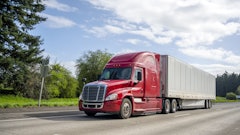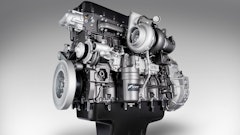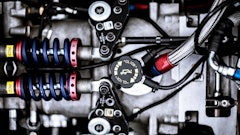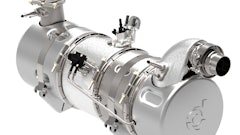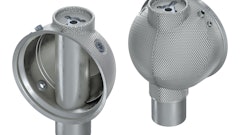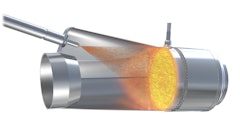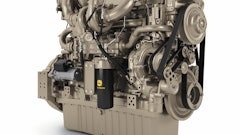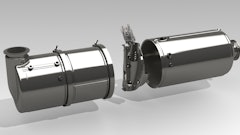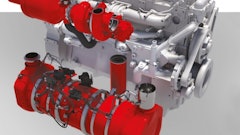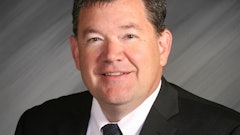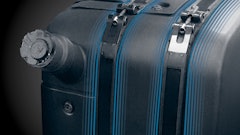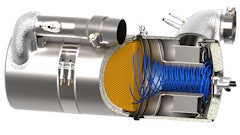Engine and equipment manufacturers learned long ago that there's little stability in the politically charged arena of emissions — and the U.S. Supreme Court re-emphasized that in March.
In a 5 to 4 decision, the court ruled that the federal Environmental Protection Agency (EPA) should give carbon dioxide emissions the same consideration it gives more obvious pollutants, including nitrogen oxides (NOx), carbon monoxide, hydrocarbons and particulates. The decision is significant because it could adversely impact the future of various biofuels, usher in a new round of emission standards and significantly increase the clout of state regulators.
The decision concludes a lawsuit filed by environmental groups and state regulators demanding federal regulations restricting carbon dioxide emissions from vehicles and power plants. It overturns a 2 to 1 decision by the U.S. Court of Appeals of the District of Columbia, which backed the EPA.
The justices rejected EPA's claim that the Clean Air Act did not give it the authority to regulate carbon dioxide emissions, which are considered by many scientists to be a significant cause of global warming. Instead, the court ruled the EPA "has offered no reasoned explanation" for not doing something about the greenhouse gas.
Given the almost insurmountable task of proving that carbon dioxide does not contribute to global warming, it's very likely EPA will add carbon dioxide to its list of regulated pollutants, which will have a significant impact on both the on-highway and off-highway markets.
Some potential benefits for diesel
Carbon dioxide regulations aren't necessarily a bad thing for diesel-fueled engines. Although any emission regulation means engine and equipment manufacturers will have to spend millions to research and defend their findings, diesel engines are environmentally friendly when it comes to greenhouse gases.
Even the California Air Resources Board (CARB), no friend to the diesel industry, concludes: "diesel compression-ignition engines, with higher compression ratios, turbocharging and lean air-fuel ratios, provide significant carbon dioxide reductions compared with conventional gasoline engines."
Carbon dioxide emissions are directly related to fuel efficiency. The more fuel burned, the higher the carbon dioxide output. Because diesel-fueled engines are about 30% more fuel-efficient than gasoline engines, they emit 30% less carbon dioxide. Diesel also stacks up better than natural gas, LPG and other alternative fuels considered environmentally friendly. Like gasoline, these "clean" fuels are less energy efficient than diesel, which means they generate more carbon dioxide.
Carbon dioxide is also emitted during the refining process used to create fuels. This is especially troublesome for the corn-based ethanol boom now driving the economies of many agricultural communities. Ethanol is not only an inefficient fuel in terms of its power output, but the refining process needed to create ethanol consumes a significant amount of energy, which generates carbon dioxide.
Forcing a new generation of biofuels
The refining issue will become increasingly significant as regulators add new regulatory tools to their war on global warming. Both the European Commission and CARB are close to adopting regulations that will require fuel suppliers to reduce carbon dioxide emissions caused by the production, transportation and use of their fuels by 1% per year between 2011 and 2020. It is currently believed that achieving this significant a reduction will only be possible if refiners scrap corn-based ethanol in favor of "second-generation" biofuels made from woody material and grasses.
The Supreme Court's ruling is also expected to increase the clout of state regulators in the battle over highway emissions.
Until now, the federal government has been the prime arbiter of air quality and emission standards, while states have had a secondary role. By siding with the 12 states that filed the lawsuit, the EPA has opened the door for additional litigation.
In another decision of significance to the diesel industry, the EPA appears to have partially embraced the concept of Selective Catalyst Reduction (SCR) technology, which is expected to be a key strategy that engine and equipment manufacturers will employ to meet the next round of increasingly stringent emission standards.
With SCR technology, ammonia is injected into exhaust gases before it reaches a catalyst that then converts NOx emissions into harmless gasses. It can also significantly reduce hydrocarbon and particulate emissions. Unfortunately, the technology is difficult to adapt to the mobile market because of the equipment that is needed to make it work.
The primary concern is the storage tank for urea, an organic compound that can be converted to ammonia as needed. It takes about 1 gallon of urea to successfully treat 18 gallons of fuel, which means designers would have to make room for new storage tanks. EPA is also concerned that operators may neglect to fill the urea tanks, which would render the emission-reduction technology ineffective.
EPA shows interest in SCR technology
For these reasons, many believed SCR technology would be a regulatory dead-end. EPA's March guidance letter changed that perception, opening the door for investment and innovation.
"EPA's receptivity to SCR technology provides an important level of flexibility and choice for manufacturers working to meet near-zero emissions levels for diesel engines," says Allen Schaeffer, executive director of the Diesel Technology Forum. "A number of heavy-duty diesel engine manufacturers have indicated that SCR could be a key part of future emissions compliance with new EPA air quality regulations."
Equipment and engine manufacturers know EPA's advisory doesn't carry the same weight as a regulatory action and that the agency could still pull the rug out from under the promising technology. However, EPA has laid out a roadmap indicating what it expects manufacturers to achieve before the agency is willing to certify specific applications based on the technology.
- Maintenance intervals: EPA currently prohibits any emissions-related maintenance before 100,000 miles (or 3,000 hours of use) for many diesel-fueled engines. This is to ensure the long-term effectiveness of the emission-reducing components.
Because urea is needed to make the SCR technology work, EPA considers filling the urea storage tank to be emissions-related maintenance. Since it would be inconceivable to build a tank that could hold enough urea to last 150,000 miles, EPA would have to modify existing regulations, something the agency indicated it might be willing to do.
- Compliance: EPA is also concerned that end-users or fleet managers may neglect to fill the urea tank, which would significantly increase emissions. Therefore, the agency wants assurances that the vehicle/equipment cannot be operated unless there is urea in the tank.
- Warnings: EPA says engine and equipment manufacturers must ensure that operators are adequately warned when the urea storage tank is low or empty or when the tank is filled with something other than urea.
- Availability: EPA wants assurances that urea will be readily available at dealerships and fuel outlets.
There are issues for manufacturers and end-users, as well. SCR technology could add 4 cents or more per gallon of diesel, due to the cost of urea. New higher-grade standards may also be needed because current urea products contain metals and phosphates that can damage the catalyst. There are also some temperature issues because urea freezes at around 12 F and degrades significantly at 86 F.
Nonetheless, many believe SCR technology will play an important role in the future of diesel emissions. Europe has already jumped on the bandwagon, creating a consortium to distribute and market a product known as AdBlue.
"When combined with the new ultra-low sulfur diesel fuel, SCR can significantly lower nitrogen oxides, particulate matter and hydrocarbons," Schaeffer says. "The EPA's new guidelines demonstrate progress toward achieving emission reductions that will allow diesel cars, trucks and SUVs to meet the stringent air quality standards in all 50 states."
Dave Jensen is a contributing editor from Milwaukee, WI.




